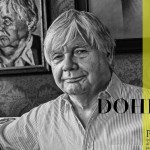 Pat Doherty, the man who built Harcourt Developments, is not a high profile tycoon. The unprepossessing Irishman is
Pat Doherty, the man who built Harcourt Developments, is not a high profile tycoon. The unprepossessing Irishman is
all about substance rather than style – his younger peers in the property developments business have much to learn from him. He rarely, if ever, gives interviews because he doesn’t need to. We have picked the Chelsea Harbour hotel as the venue for our conversation. He owns it but only the doorman, with whom he shakes hands, seems to be aware of this
fact. He doesn’t pull rank and doesn’t make a fuss. As he warms to the conversation, the Irish humour, laced with hard boiled wisdom, starts flowing easily.
At 14, he was already working as a builder for his uncle in county Donegal, Ireland, so when he travelled to England at age 18 and a half, he already had 4 years experience under his belt. ‘The weekly wage in Ireland was £3-4 a week then. In England it was £14-15, so a friend and I decided to leave together.’ They worked for Wimpey to begin with but by the time he was twenty two, Pat had his own business supplying brickwork and carpentry to building contractors.
In the late 60s he bought a house near Olympia and turned it into five flats; this was his first development project and the start of a property portfolio that spans several countries on three continents. Doherty consolidated his various
companies under the Harcourt Developments umbrella about 10 years ago and has among othersBrigadier Parker Bowles on his board of directors. His Antigua hotel, Carlisle Bay, was voted Hotel of the Year by Tatler magazine and Lough Eske
Castle, in his native Donegal, has won World’s Best County Hotel for the past two years running. He has also invested in Grand Bahamas Island, originally developed by Jack Heyward and Edward St George. A house he acquired in Tobago is earmarked as a future eco hotel and he co-owns a large wild life farm in South Africa.
Harcourt has developments in Jersey and Portsmouth (the old Hassler hospital) and Harcourt’s most ambitious project, however, is Titanic Quarter – a 75 hectare site which was once the Harland &Wolff shipyard in Belfast. The project goes beyond mere development, of course – it is a massive city regeneration opportunity for Northern Ireland. Eric Kuhne, creator of the Sydney Darling Harbour, has been retained for the job and the Titanic signature building will incorporate iconic elements from the bow of the most iconic ship in the world.
The centrepiece to which is Titanic Belfast, a landmark visitor attraction based on RMS Titanic, due to open in April 2012. Its futuristic architectural design is set to become as iconic for Belfast as the Eiffel Tower is for Paris.
Like his Greek counterpart, major property developer Dakis Joannou, Doherty is a keen art collector and patron. All his properties have an art dimension and the Chelsea Harbour hotel (only hotel in England, he tells me, that has only suites rather than rooms) boasts differently decorated penthouse suites and art replicas from his personal collection.
It is a well documented fact that Lucian Freud painted Doherty’s portrait. What is not so well known is that he produced not one but two portraits as well as an etching of Doherty.
Freud asked him to sit for a portrait through Andrew Parker Bowles who originally introduced the two men. Doherty was reluctant at first because he had misgivings about the number of sittings required. Parker Bowles prevailed by telling him it was a great honour to be asked by Freud. Doherty ended up doing 100 sittings for the first portrait and 80 for the second.
In the process, the two men became firm friends and used to dine together. He has since bought the paintings and
takes justified pride in them.
I ask him about the other ‘golden boys of Ireland’, Denis O’Brian, JP McManus, John Magnier and Dermot Desmond, and
what it is that makes Irishmen so successful. Without missing a beat, he says, ‘they are hungry’. The Irish wit is legendary and his narrative is peppered with several jokes and funny repartees. His best anecdote is perhaps the most characteristic of the man himself.
He sat next to a big talker at a party once. The man talked about his property portfolio. Doherty listened. The man eventually mentioned he was keen to sell off one of his developments. Doherty inquired what that was. The reply came as something of a surprise – it was one of Doherty’s own properties. ‘That’s odd’, he said, ‘it’s one of mine but I had no idea it was for sale!’





 Saving...
Saving...